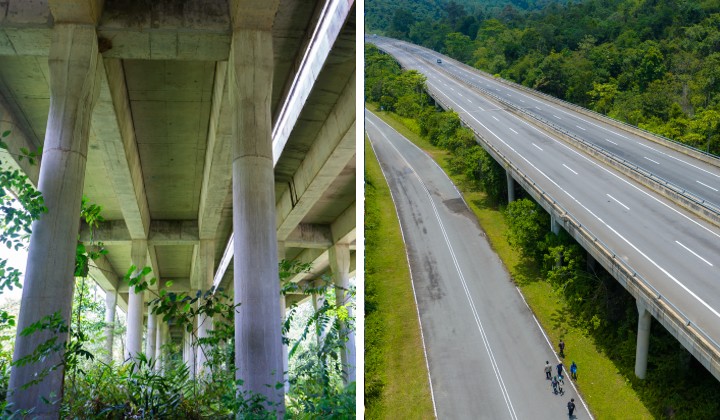Malaysia’s Eco-Viaducts: Paving Safe Passage For Wildlife
By providing a safe passage for animals over highways, these structures help prevent collisions between vehicles and wildlife, which can be dangerous for humans and animals

Subscribe to our FREE Newsletter, or Telegram and WhatsApp channels for the latest stories and updates.
Human-wildlife conflict is a major issue in Malaysia, particularly in areas where development has encroached upon natural habitats.
This conflict can lead to negative consequences for humans and wildlife, including injury, property damage, and loss of life.
In 2014, the Improving Connectivity in the Central Forest Spine (IC-CFS) project was founded with the backing of the United Nations Development Programme (UNDP) and funded by the Global Environment Facility (GEF).

The IC-CFS is an integrated project that seeks to re-establish connectivity in three key forest landscapes known for their rich biodiversity and is considered a critical landscape for Malayan Tiger conservation.
The primary linkages consist of a linear corridor that connects two separated forests, thereby re-establishing their connectivity to form a continuous link in the CFS.

One solution to this problem is constructing eco-viaducts designed to provide safe passage for wildlife over highways and other human-made barriers.
The eco-viaducts are part of the Central Spine Road (CSR) project, which spans from Kuala Krai, Kelantan, to Simpang Pelangai, Pahang, covering a total length of 390km.
The CSR project aims to spur economic growth in nearby townships and reduce travel time between Kuala Lumpur and Kota Bharu.

However, the intersection of CSR with the Central Forest Spine (CFS) at Sungai Yu in Kuala Lipis, Pahang, poses a significant risk of human-wildlife conflict.
To address this issue, the Ministry of Works has included the wildlife crossing structures in the construction package.
Three eco-viaducts have been built in Sungai Yu, with eco-viaduct no.3 being the longest at approximately 900 meters.

Eco-viaducts are designed to provide safe passage for wildlife over highways and other human-made barriers.
These structures are designed to provide a secure path for animals over highways and prevent collisions between wildlife and vehicles.
Bangkai Harimau kumbang jantan ditemui di tepi jalan Lebuhraya Central Spine Road di Sungai Yu, Merapoh, semalam, dipercayai mati dilanggar pic.twitter.com/UoDpNONJtR
— BERNAMA (@bernamadotcom) June 23, 2017
Such collisions can be hazardous for both humans and animals.
Additionally, eco-viaducts can help to reconnect fragmented habitats, allowing wildlife populations to move more freely and access new food sources.

The planning of these eco-viaducts took into account three national-level master plans: The National Physical Plan, The East Coast Economic Region (ECER) Master Plan, and the National Tiger Conservation Action Plan.
All three plans emphasize the importance of environmental conservation, particularly in the Sungai Yu corridor.
The Malaysian Conservation Alliance for Tigers (MYCAT) has also identified this area as part of the Sungai Yu Tiger Corridor Conservation Program.
The program aims to restore the ecological linkage and aid in recovering endangered wildlife in the Sungai Yu corridor.

With the successful implementation of these eco-viaducts, it is hoped that they will serve their purpose, allowing wildlife and humans to coexist harmoniously in the same landscape.
This innovative solution is a testament to Malaysia’s commitment to preserving its rich biodiversity while advancing its infrastructure development.
This project also serves as a model for other countries grappling with similar issues of infrastructure development and wildlife conservation.
READ MORE: RimbaWatch Calls On DoE To Revoke EIA Approvals To Build Road Across Tiger Reserve
Share your thoughts with us via TRP’s Facebook, Twitter, Instagram, or Threads.





